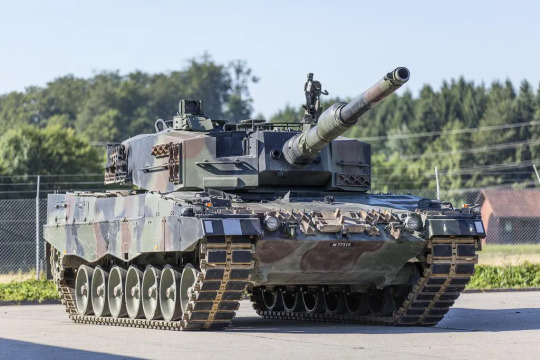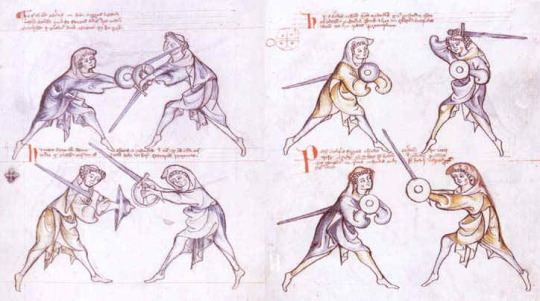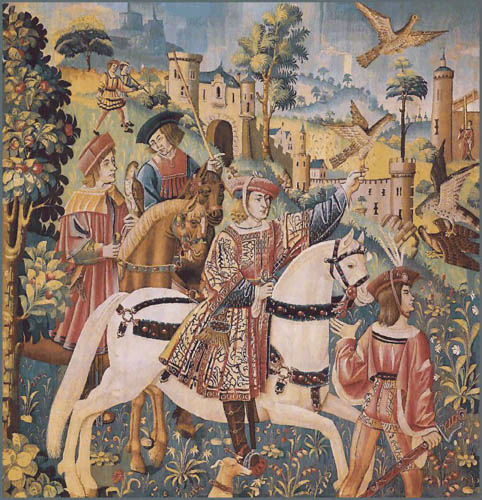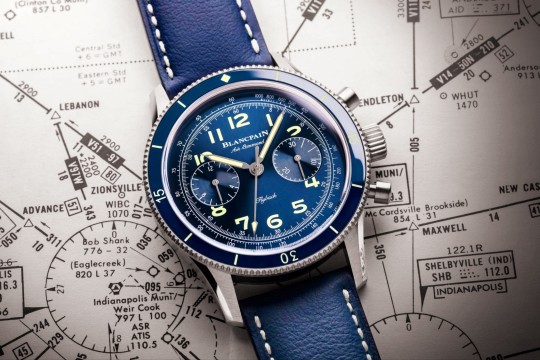#Swiss military
Explore tagged Tumblr posts
Text
#wenger#timepiece#watches#accessories#swissmade#swiss#fashion accessory#menstyle#swiss military#military
2 notes
·
View notes
Text

In a surprising turn of events, Switzerland has made a historic decision to permit the sale of decommissioned tanks to Germany, which will then be sent to Ukraine. This decision comes after Switzerland's military recently decided to phase out its aging fleet of tanks, leading to the availability of these tanks for sale. The move has been met with mixed reactions, with some questioning the ethics of selling military equipment to conflict zones, while others view it as a positive step towards supporting Ukraine in its fight against Russian aggression. The decision also marks a significant shift in Switzerland's traditionally neutral stance in international conflicts.
2 notes
·
View notes
Text










SUONI SVANITI, INUDIBILI E IMMAGINARI - AT LA RADA, LOCARNO For «Sound Echoes, Listening Spaces», a duo show with Juliette Henrioud at La Rada in Locarno, I chose three places that are emblematic of Ticino’s sound culture to create an electroacoustic composition. First, I went to the Monte Ceneri and Isone regions to listen to and record the radio, because the altitude allows better reception of short-wave broadcasts, which make it possible to listen to stations from all over the world.
In those two places, where the transmitters of Radio Monte Ceneri, Radio Svizzera - Rete Uno and Voice of Russia were located, I recorded during military exercises. That’s why the audience could hear mortar, cannon and machine-gun fire, giving them a rather violent perspective on the alpine acoustic environment. And I’m not talking about the four drones and two soldiers that were sent by the army to surveil and control me while I was actually in the public space.
The second place I visit was the village of Gravesano, this village near Lugano was where the first studio for electronic music in Switzerland was built in 1954 by the German conductor Hermann Scherchen. Renowned for its tranquillity, the place was frequented by avant-garde composers and musicians from all over the world. Some composers practiced the then-new practice of field recording. So I wanted to find out what could be heard there today.
To conclude, I collaborated with the Swiss National Sound Archives in Lugano. I set up my microphones in the digitization studios and was able to get my hand on rare and old archives. Including sonic archives of factories and workers on a construction site in Ticino in the 40s, bird songs and dog barks in Gravesano in the 50s, music recorded on acetate, wire, magnetic tape, and even on wax cylinders from the 1910s. I've also incorporated and edited all sorts of radio signals and some excerpts related to the history of Ticino and Swiss broadcasting.
Last but not least, since it was impossible to include all the interesting sonic material in my composition without making it overly indigestible (and for copyright reasons) it’s not possible to listen to all the sources I would have like to share. So, I proposed to the Fonoteca Nazionale to open an "antenna" or a temporary listening station at La Rada and set up a listening point for the duration of the exhibition. Both institutions agreed to play along. I thank them warmly. It was quite exceptional because it was the first collaboration between a sound artist/musician and the Fonoteca. The audience was able to listen to many audio treasures and get lost digging through the database of fonoteca.ch.
Credit: exhibition views by Riccardo Giancola, courtesy of La rada
Other images by me
#large#sound art#Locarno#Fonoteca Nazionale#sound archives#Radio#Swiss military#Field recording#multichannel#acousmonium
0 notes
Text

Week End - Mega Sale
Bluetooth Speaker
Offer Price Starting from : ₹ 999
Shop Now @ Supreme Mobiles
For Details : 98587-98587 Order Now : www.suprememobiles.in
#online sales#supreme mobiles#supreme sales#speakers#bluetooth speaker#endefo#promate#swiss military
0 notes
Text

Tigers in the Meiringen fog
#Swiss Air Force#Northrop#F-5#F-5E#Tiger II#Fighter aircraft#Military aviation#Tigers#fog#Meiringen#Fighters#jets#planes#aviation photography#airplanes
77 notes
·
View notes
Text

You might think these Renaissance uniforms occupy the realm of yesteryear, but you'd be wrong! These are the costumes of the Swiss Guards who guard the Pope/Vatican still today! They recruit Swiss unmarried Catholic men between 18-30.
77 notes
·
View notes
Note
I understand that knights normally followed a fairly set career path: start as a page, get taken on as a squire, and then if they merit it and have resources, knighthood. How did it work for other classes of soldier? How would one go about becoming say, a man at arms, or a specialist like a long bowman or a crossbowman or a pikeman for example?
Ah, excellent question!

One preliminary thing, you do have to be mindful of the distinction between actual training and social organization. Let's take your "career path" for knights, for example - at its heart, the whole page/squire thing was essentially a two-stage apprenticeship, but there was both a mix of actual martial training (I'll get into the curriculum in a bit) and what we would think of as socialization into the noble class - things like music, dancing, literacy, manners, and so forth aren't really directly related to the job of an armored heavy cavalryman, after all.
Importantly, when it comes to the distinction between various ranks, we have to keep in mind the importance of both material resources and sociocultural status. As you note, the difference between a squire and a knight was really about whether the squire could afford the full complement of arms, armor, and a horse, and there were more than a few grown men who were squires their whole lives (this is the inspiration for characters like Squire Dalbridge) because they just didn't have the money to advance to knighthood.
At the same time, the difference between a knight and a man-at-arms came down to social class - in order to be a man-at-arms, you had to have the same training as a knight and own the same equipment (arms, armor, and horse), which is why a lot of the written sources simply call all such men men-at-arms whether they were knights or not - although some sources took more pains to distinguish between the milites gregarii (the plain man-at-arms) and the milites nobiles (which, as you probably have guessed, refers to actual knights).
The former tended to be from the gentry rather than the nobility, and as a result of their lower status, they were usually paid half the wage rate of knights despite doing the same work and taking on the significant risk of providing their own equipment. (The fact that they were cheaper also explains why the proportion of actual knights on the campaign rolls dropped rather rapidly between the 13th and 14th centuries - knights were more expensive, so hiring men-at-arms instead meant you could stretch the budget for heavy cavalry.)
The Knightly Curriculum
As I suggested above, the training for knights was essentially an apprentice system where the page and then the squire provided service to their master in exchange for education. When it comes to the actual content of this training, the curriculum was actually pretty ecletic:
As you might expect, training in arms was an important part of the program. However, this training included a lot more than just swordsmanship. While the sword was very culturally important, when it came to the actual military function of a heavy cavalryman, the lance was arguably of greater importance. Training also tended to include other sidearms - axes, maces, and the like. In later periods, as armor got a lot better and mounted frontal charges tended to be de-emphasized in favor of having men-at-arms fight as dismounted heavy infantry, the curriculum expanded to include new weapons like the poleaxe and other polearms that Gary Gygax was obsessed with.

Training in horsesmanship was also a core part of the curriculum. GRRM is not wrong when he says that "jousting was three-quarters horesemanship," and this is why pages and squires were not only taught formal equestrian lessons, but were also taught how to hawk and hunt as part of their training. Hawking and hunting were the past-times of the nobility in no small part because they involved riding horses very fast through difficult terrain while simultaneously handling either a dangerous animal or weaponry, and were thus were considered good training for future cavalrymen. As Hillary Mantel puts it, "la chasse...we usually say, we gentlemen, that the chase prepares us for war."

Training in armor tends to get downplayed or overlooked, but it was considered so important that a major portion of what pages and squires did was deal with armor - carrying it, maintaining it (scrubbing with abrasives to prevent rust, oiling the straps to keep the leather straps supple, polishing - it was really endless labor), repairing it, putting it on their master and taking it off, and so on and so forth - so that they would understand every step of the process and be able to fend for themselves later on if they didn't have attendants of their own. The famous French knight, Jean "Boucicaut" le Maingre, was held up as an example to pages and squires for constantly wearing full armor while undertaking exercise:
youtube
What About the Man-at-Arms?
As you may have noticed, I've been mostly talking about how knights trained rather than men-at-arms. So how did your gentry-born homme d'armes train? Essentially the same as a knight, but with less of the aristocratic bells and whistles of ritualized service and socialization to the nobility. So a son of the gentry would probably be training under the tutelage of their father or other male relative - and given that we're talking about a society in which the overwhelming majority of people did the same jobs as their parents, often being legally bound to do so, this was a very common phenomenon all the way from peasants upwards - or perhaps from a professional tutor who would most likely be a veteran in working retirement.

Towards the later Middle Ages, as literacy rates increased and book production expanded to match supply to demand, your more traditional systems of apprenticeship and one-on-one tutoring became supplemented with written manuals of arms. While this genre of military literature goes all the way back to classical antiquity - and indeed, Roman manuals like De re militari were very popular in the Middle Ages, as were translations of Byzantine manuals - these lavishly illustrated manuscripts were both practical teaching tools and status objects for the families who owned them.
Specialists: Longbowmen, Crossbowmen, and Pikemen
Ok, enough about the upper classes, what about the commoners who served as specialist infantry in Medieval and Renaissance armies?
Well, I've already written a bit about longbow training, but the gist of it is that what started out as a (Welsh) hunting tool was recognized by the English royal government as a vital aspect of military readiness, so laws were promulgated that required essentially all but the poorest to own a longbow and that "that every man in the same country, if he be able-bodied, shall, upon holidays, make use, in his games, of bows and arrows… and so learn and practise archery." This training started at a fairly early age and lasted at least a decade, because it involved both the acquisition of technique and the development of the body (not just the arms, but also crucially the back muscles, as the "special sauce" of the English longbowman was his ability to "lay my body in my bow" rather than relying solely on the arms) - such that archeologists can identify longbowmen from the over-development of the shoulder and arm bones.

What about crossbowmen? Well, as I've already written a bit about, one of the major advantages of the crossbow over the longbow is that you could train someone to be a crossbowman in as little as four months, compared to the decade at minimum for a longbowman, because most of what you were teaching them was accuracy in shooting (hence why the recruitment process often involved eye exams) and the procedures for loading and cocking the crossbow - which required a certain amount of physical strength to pull back the string to the nut that would hold it in place, or to work the winch or the lever or the gaffe or the windlass if you were using a heavier crossbow, but nothing like the physical conditioning required for a longbow.

One of the reasons why the term "Genoese" is so often associated with the crossbow is that the Republic of Genoa established a corps of crossbowmen to serve both in the army and as marines in the navy and these experienced soldiers in turn provided a ready supply of labor for mercenary companies. While the captains who recruited on behalf of the great companies might have to put in the up-front investment of equipment (the crossbow and its accessories, pavise shields, armor,and sidearms), they were able to essentially outsource the training costs to the Republic.
When it comes to training, pikemen were somewhere in the middle between the longbowman and the crossbowman. Because pikemen have to fight shoulder-to-shoulder with lots of other pikemen without stabbing one another accidentally or getting their polearms tangled up, coordinating movement and action was vitally important. Hence, pikemen learned a series of quite complicated drills to teach them how to move in formation in different directions, how to change formations from line to square and back, how to switch from pike to sidearm and back, how to work with missile infantry, and so forth.

As I've talked about before, a big part of the reason why Swiss pikemen were so feared on the battlefield is that, because they were very well-drilled and disciplined due to the policies of universal military service adopted by the Swiss cantons, they could execute these drills very quickly, which meant that the Swiss pikemen could turn on a dime from an impenetrable defensive pike square to a shockingly fast and aggressive deep column which beat the ever-loving shit out of the Burgundians, the Hapsburgs, the Italians, the French, and pretty much everyone - until the Swiss ran up against a nasty combination of the German Landsknecht and the Spanish tercio.
#history#military history#knights#men-at-arms#medieval warfare#mercenaries#longbow#crossbow#pike#medieval history#swiss pikemen
171 notes
·
View notes
Text


65 years ago... NASA-issued astronaut watches ! 1959 NASA's bespoke LeCoultre astronaut wrist watches ! In 1959, the NASA Space Task Group (STG) decided the "Mercury 7" astronauts required a 24 hours dial pilot watch as the worldwide network of tracking stations worked with military 24 hours system, so an astronaut in orbit could cope easier with time awareness, experiencing a Sunrise every 90 minutes. The STG's choice was LeCoultre as the watch brand already offered the LeCoultre Quartermaster with 24 hours dial and genuine 24 hours movement. These bespoke LeCoultre astronaut watches were worn on lightweight stretch steel Jacoby Bender bracelets. Although not worn during spaceflight missions, all Mercury 7 astronauts wore these 34 mm waterproof anti-magnetic stainless steel LeCoultre watches extensively during training and official events up to October 1963! (Photos: LIFE/NASA)
#LeCoultre#Astronaut#24 hours#NASA#Mercury 7#JB Champion#Jaeger-LeCoultre#Swiss-made#MoonwatchUniverse#military#The Right Stuff#Zulu time#test pilot#pilot watch
13 notes
·
View notes
Text

Bunker - Kanton Uri - Schweiz 🇨🇭
#architecture#landscape#jason guilbeau#concrete#new topography#photography#artists on tumblr#new topographics#bunker#swiss alps#switzerland#swiss#war#festung#military#alps#kanton uri#uri#schweiz#spring#art#archiporn#architettura#architektur
39 notes
·
View notes
Text
I like to remember my old colleague who, before an Astrophysics exam, chugged three „3 espresso“ drinks, basically vibrated in his seat and swore he could see the equations.
An unrelated colleague used to mix coffee and redbull and call it battery acid.
#kris talks#don‘t do physics guys you get like that#tbh the wildest thing is always people taking this one drug that is illegal everywhere except switzerland and sweden#because the swiss military would collapse if you outlaw snus
7 notes
·
View notes
Text



Military post cards from SWITZERLAND.
#post card#pocztówka#litografia#kartka#military#Schweiz#switzerland#svizzera#swiss#suisse#litho#coat of arms#Wappen#militarna#soldiers#wojsko#armia#armee#militaire#St. Gallen#flags#Helvetia#liestal#army
9 notes
·
View notes
Text
1 note
·
View note
Text

Flare flyby during the Axalp Airshow
#military#aircraft#air force#fighter jet#aviation#fighter plane#plane#f 18 hornet#f18superhornet#f 18#axalp#airshow#switzerland#swiss air force
12 notes
·
View notes
Text

KASERNE -> St. Gallen / Switzerland -> military post card.
#military#St. Gallen#Schweiz#Kaserne#Wappen#Suisse#ansichtskarte#kartka#post card#postkarte#soldiers#Swiss#litografia#lithograph#building#litho#Switzerland#barracks
2 notes
·
View notes
Text



🛩️ Back in the 1950s, as the United States Air Force sought precision timekeeping, Blancpain answered the call, inspired by its success with the iconic Fifty Fathoms diver's watch.
🇨🇭 Founded in 1735 by Jehan-Jacques Blancpain in Switzerland, Blancpain SA has been synonymous with luxury watchmaking excellence for centuries. Nowadays Blancpain is the oldest registered watch brand in the world.
⌚️ These specialized chronographs, offered to American military pilots through the esteemed distributor Allen V. Tornek, represent a rare and coveted piece of horological history. With only a limited number of prototypes believed to have been produced, the Air Command chronograph is a true collector's dream.
#TimeTrek#Blancpain#AirCommand#TimepieceHistory#men’s watches#swiss watch#luxury watches#swiss#swizerland#usa#military#pilots#aviation#Jehan-Jacques Blancpain#companies#brands#watches#watch#clock#time#history#diver's watch#chronometer#masterpiece#air force#timekeeping#watchmaking#collection#company#1735
13 notes
·
View notes
Text

A Pair of Swiss Hornets coming across Axalp
#Swiss Air Force#Boeing#F-18#Super Hornet#Hornets#jets#fighter aircraft#Military aviation#Axalp#planes#airplanes
43 notes
·
View notes